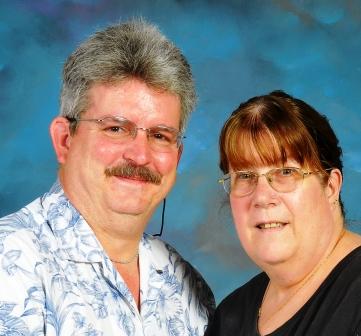 Candy and I do not have any of our Diaconate formation classes over the summer. Since there will be a number of months before our next series of classes start, I thought that I would share some FAQ’s about the Diaconate. As always, please don’t hesitate to respond or to contact me with any questions about becoming a deacon or about these blogs, Jay Krueger.
Candy and I do not have any of our Diaconate formation classes over the summer. Since there will be a number of months before our next series of classes start, I thought that I would share some FAQ’s about the Diaconate. As always, please don’t hesitate to respond or to contact me with any questions about becoming a deacon or about these blogs, Jay Krueger.
TRUE OR FALSE:
3. There have always been permanent deacons in the Roman Catholic Church.
4. A married deacon is expected to place the Church as a priority above his wife and family.
Answers
3. FALSE. To be fair, this is a trick question! There have always been deacons in the Church. In Acts of the Apostles, the apostles assign the service ministries of the Church to seven deacons. Several saints in the early Church were deacons, some of whom later became bishops, like St. Athanasius. In general, up until 500-600 A.D., their duties were similar to those of today’s deacons. They were especially instrumental in helping the Church spread across Europe.
The permanent diaconate gradually disappeared during the Middle Ages. Monasteries and convents were providing charity originally associated with the service of deacons. The liturgical role of the deacon received greater emphasis over works of charity. Gradually, the diaconate became a transitional step to priesthood.
Vatican II restored the office of the permanent diaconate. There were three main reasons for this action. The restoration would return to the Church the full complement of ordained ministries handed down from the Apostles. The new deacons would confirm and highlight the work of the Holy Spirit already present in the Church. Finally, deacons would bring sacramental service to areas where priests are scarce.
4. FALSE. A married man who is ordained a deacon in the Catholic Church is expected to honor his first commitment in the sacrament of marriage, with the Church’s blessing. The Church will not ordain the man unless his wife gives her consent in writing. A married deacon often must juggle a secular job, his family responsibilities and his service as deacon. This is not a vocation for the faint of heart!
The relationship between marriage and holy orders is an interesting one. In Eph 5:22-32, the marriage between a man and a woman is compared to the marriage between Christ and his Church. The passage, in effect, says that each one must serve the other in love. Christ came to serve rather than be served. The man has already been a deacon (Greek diakonia means “to serve”) to his wife, and she to him. Thus, his ordination to the diaconate is an affirmation of the Christian service evidenced in his marriage.
The unity of the deacon and his wife is a sign to the entire parish of the unity of Christ with his Church. Often, the deacon’s wife serves the parish or local community in a concrete way herself. After ordination, the deacon and his wife may work together in various ways to build up the Kingdom of God. The beauty of the diaconate is that the question of exercising “power” is replaced with the solid emphasis upon service. Those who would see the wife of a deacon as “used” and not appreciated are missing the point. Christ humbled himself to union with us. In a very real way, the deacon and his wife both embody this divine humility.
Original article taken from the May 14, 1995 issue of “Catholic Twin Circle.”
If you are interested in becoming a Deacon Couple, please contact:
Diaconate Formation Office
Archdiocese of Los Angeles
3424 Wilshire Boulevard, 2nd Floor
Los Angeles, CA 90010-2241
213-637-7383
If you have any questions about the Diaconate, please ask us or send us an e-mail to wyb@wyb.com. We greatly appreciate your prayers and support and will continue to keep you informed of our journey.
Candy & Jay Krueger,
Aspirancy Year, Deacon Couple Formation,
Holy Family Parish, South Pasadena
